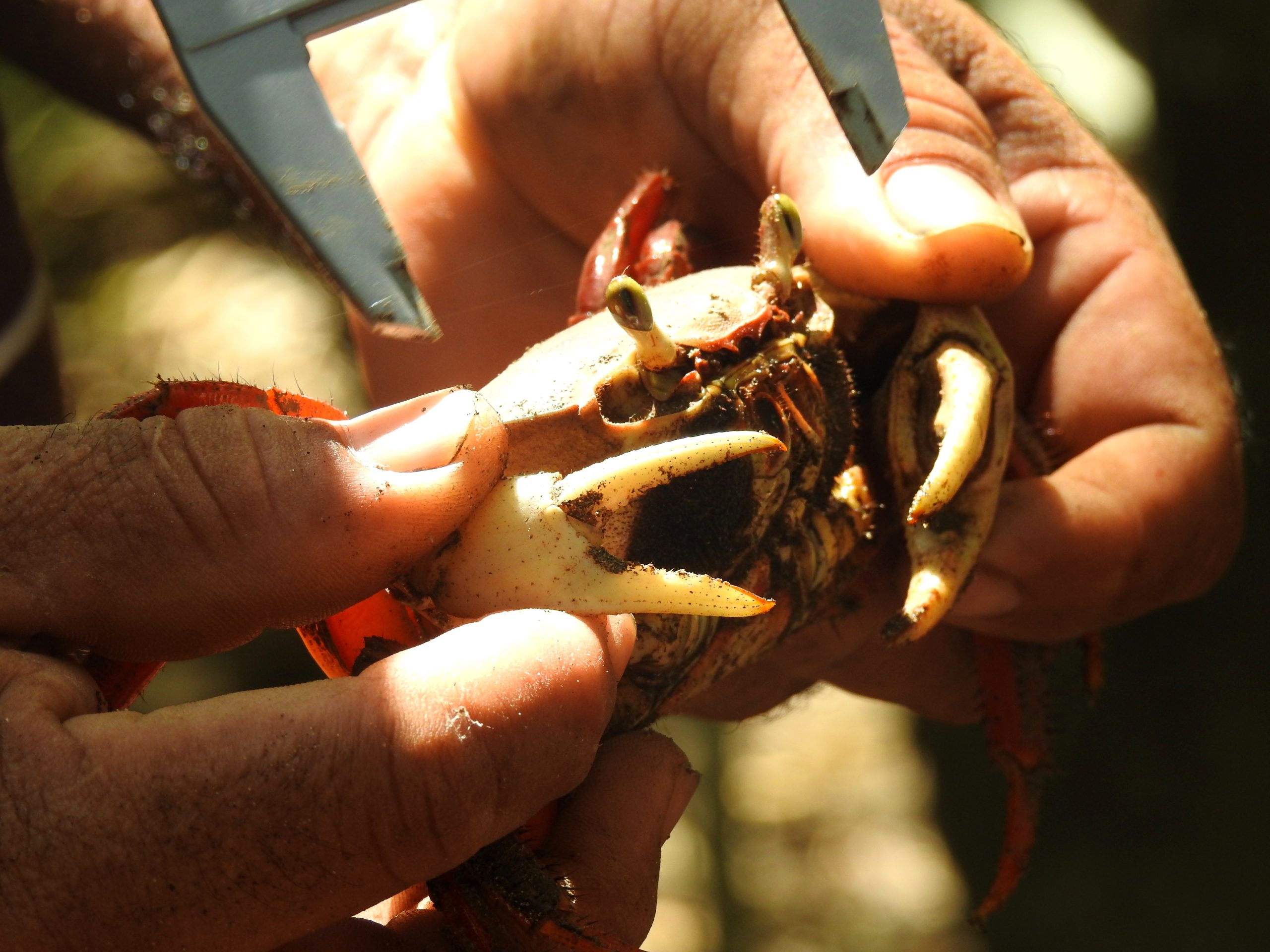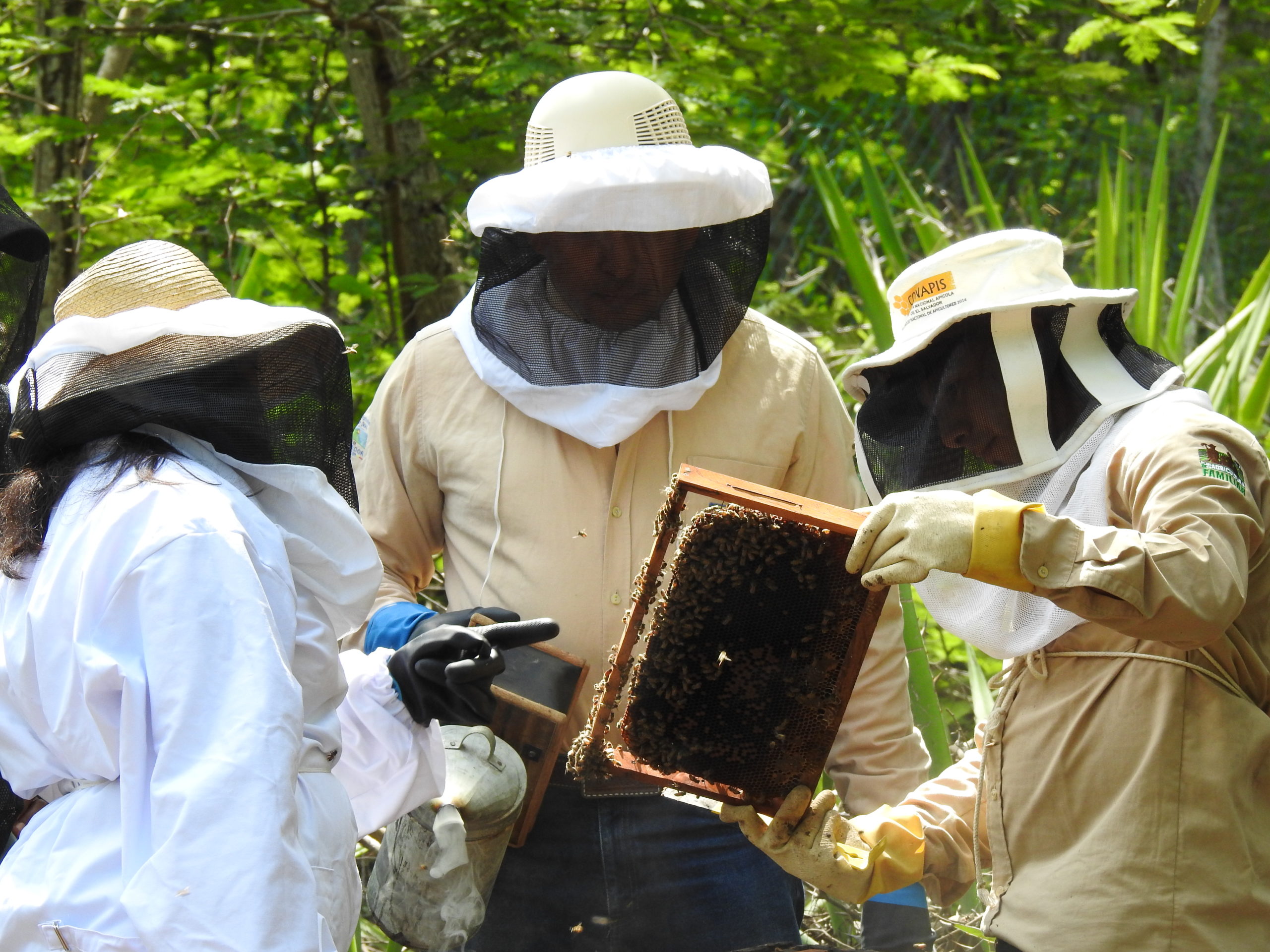Coastal communities in El Salvador sustainably harvest mangroves
Community organized governance model has led to better management
Faced with the degradation of mangroves, the impact of extreme climatic events and the excessive extraction of natural resources, communities in the western part of this Central American country organized themselves under a unique governance model, which has been highlighted at international level.
Written by Evelyn Vargas | IUCN
San Salvador, July 26, 2020 (IUCN). The Barra de Santiago Complex, located in the Pacific Coast of El Salvador, has the largest extension of mangroves in the country. In this internationally important wetland, a RAMSAR site since 2014, the local communities make use of the mangrove ecosystem under the figure of Local Sustainable Harvest Plans (PLAS as in Spanish).
Traditionally, the coastal communities of Barra de Santiago have depended upon the resources from the mangrove for their livelihoods, including fuelwood, timber, fisheries and two crustacean species, the blue crab (Cardisoma crassum) and the punche crab (Ucides occidentalis), of high food and commercial value.
The degradation of the mangroves in El Salvador, estimated to be more than 50% according to the Fifth National Report for the Convention of Biological Diversity, caused both by the impact from different climatic phenomena as well as the excessive extraction of resources from this ecosystem, severely threatened the blue crab populations.
In 2006, due to the decline of fish and the blue crab populations, as documented by the Ministry of Environment (MARN) in El Salvador, approximately twenty families from the Island of La Chácara, located in Barra de Santiago, began a governance process to organize the extraction of mangrove resources in a sustainable manner.
As a result of the success achieved by the families from La Chácara who recovered their blue crab populations and were able to increase their income from the sale of the species, the neighboring communities decided to organize themselves to replicate this harvest model, leading to the creation of the PLAS groups in seven communities in Barra de Santiago.

@ UICN / Evelyn Vargas
The organized communities advanced to another level of governance when they formed the Probosque Association, an organization that includes a total of 127 people, eleven of whom are women, which represents all of the community groups managing the mangroves under the PLAS model.
Through the Probosque Association, these communities organize their activities for the protection of the mangroves, among those, which include daily surveillance actions, the creation of seasonal closure periods, reforestation campaigns, maintenance of internal canals, waste collection campaigns, definition of family quotas for extraction, and even species relocation after extreme weather events.
Since 2018, the Probosque Association counts on support from the Regional Coastal Biodiversity Project to strengthen their livelihoods, through the generation of alternative productive economic activities in biocommerce, including the production of honey from mangrove forest, with the goal of reducing pressure on the mangrove ecosystem.
The incursion into beekeeping allows community members to diversify their income sources during the periods of seasonal closures for the blue crab. These honey production enterprises benefit 50 coastal families who have found this activity an alternative to generate employment and economic income.
“When we began we knew nothing of bees, we were afraid, we only lived from crabs, and we waited up to six months to earn money. This project has been a blessing! We changed our way of thinking, no longer just thinking about extracting crabs, but also to find another option in honey production” says José Francisco Pineda, beekeeper and member of the Probosque Association

@ UICN / Evelyn Vargas
The Regional Coastal Biodiversity Project is an initiative led by the IUCN in consortium with GOAL International and four local partners who are members of the IUCN, work for the conservation and the sustainable use of the biodiversity in coastal marine ecosystems in Central America, through the development of productive initiatives of value that foster roots and strengthen the capacity for local self-management, and is in implementation thanks to the cooperation of the United States Agency for International Development (USAID)
More information:
Evelyn Vargas
Communications Specialist
Regional Coastal Biodiversity Project